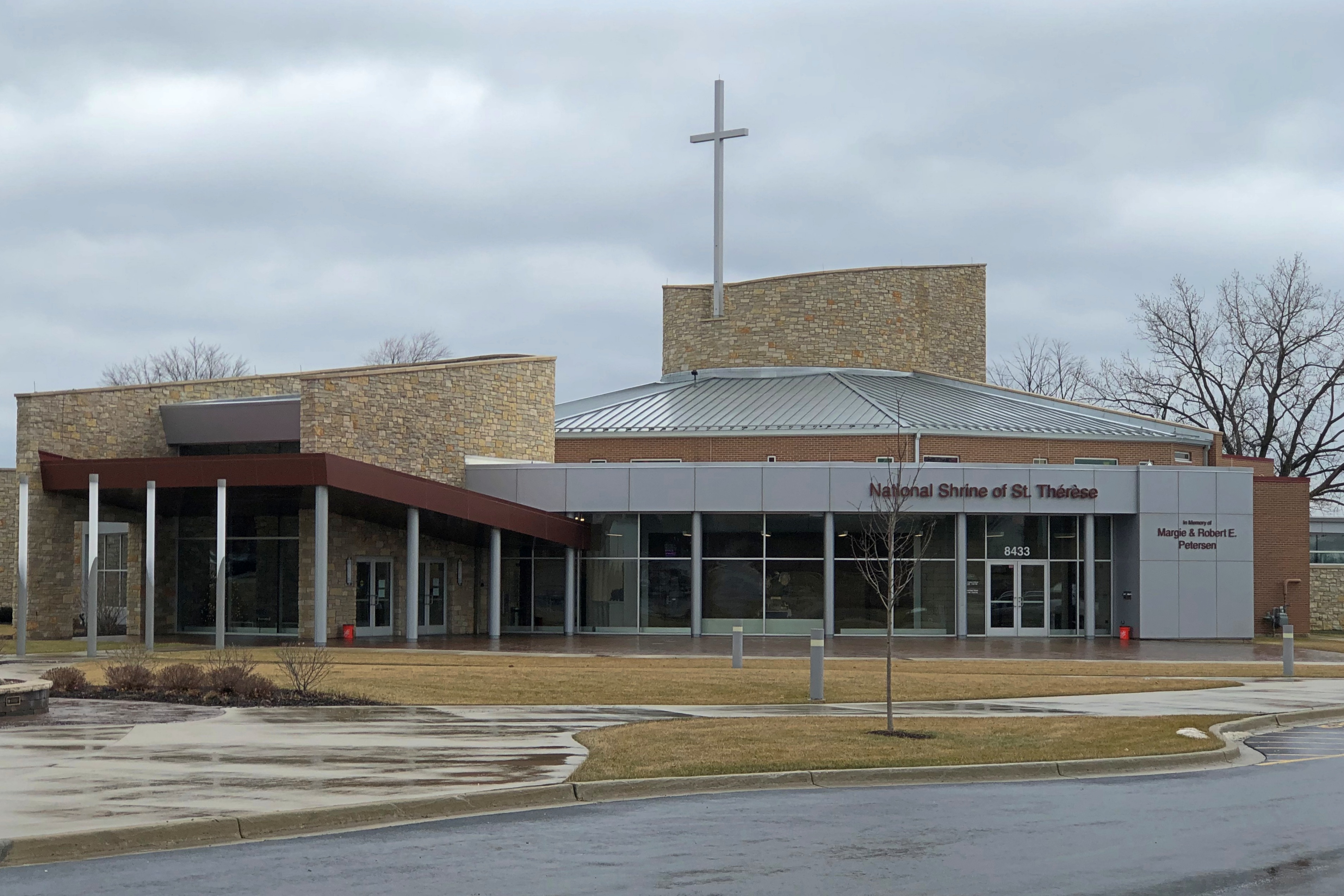Well over a decade ago, during a summertime visit to San Antonio, I drove to the west side of the city to see the Basilica of the National Shrine of the Little Flower, which I’d never seen or even heard of before, despite growing up in that city. It was very hot that day, as it tends to be that time of the year, so I didn’t linger outside to take many pictures, though I snapped a few marginal ones.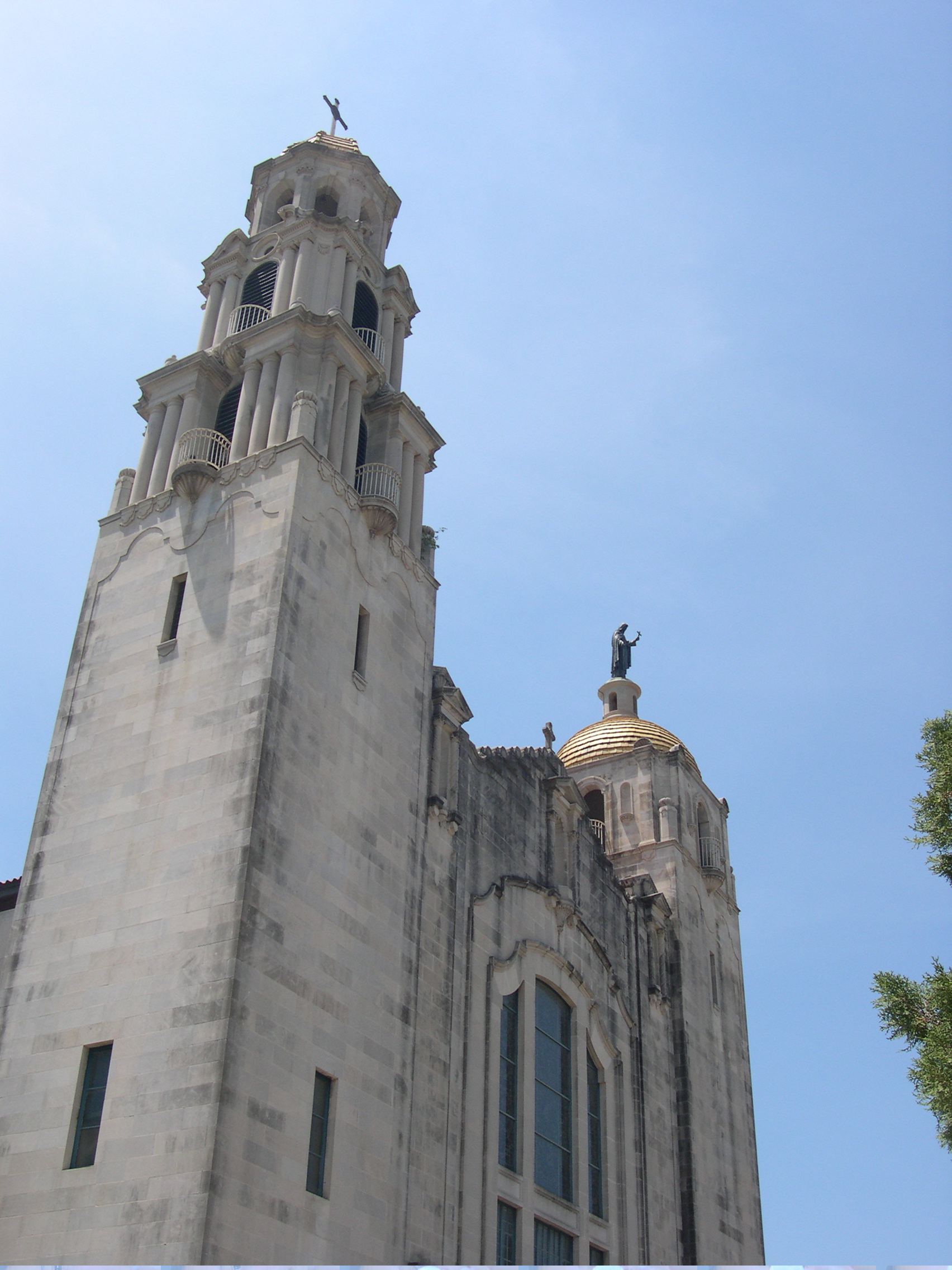
This is a better image. I’m not sure at what point I realized that the basilica in San Antonio and the National Shrine of St. Thérèse in Darien, Illinois, were dedicated to the same person, Thérèse de Lisieux, but I know now. And whatever else I know about St. Thérèse, I also have some sense of her immense popularity as a saint, inspiring edifices around the world in her honor.
We arrived at the Darien shrine just before noon on December 29, an overcast but not especially cold day. Above freezing, anyway. There it is, I told Yuriko.
So we went in. A few minutes passed before I realized that we not in the shrine, but in the nearby museum building, which I believe was the shrine before a new one was completed a few years ago. The sign on this building makes me think that. If so, there needs to be a signage update.
In effect, this is the fourth shrine to her that has existed in the Chicago area. The first two were in the city, a larger one succeeding the original as her popularity grew in the 1920s.
The church that housed the second shrine burned down nearly 50 years ago, but by the 1980s the Carmelites were able to find the scratch the build a third shrine out in the suburbs. The demographics were going that way anyway.
The Carmelites tasked Charles Vincent George Architects, based in nearby Naperville, to design the fourth and latest shrine, which was completed in 2018.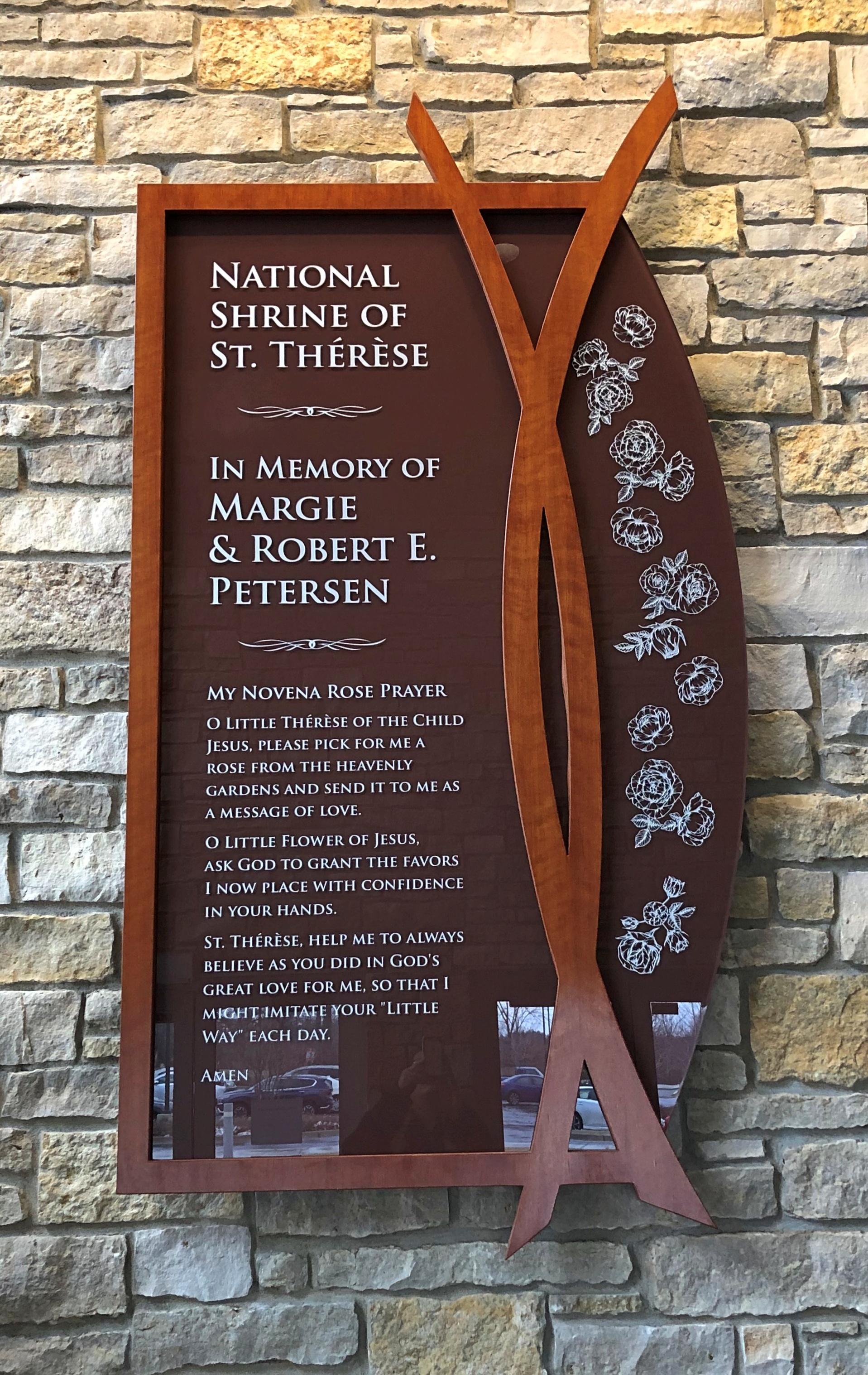

Behind the altar is St. Thérèse in glass.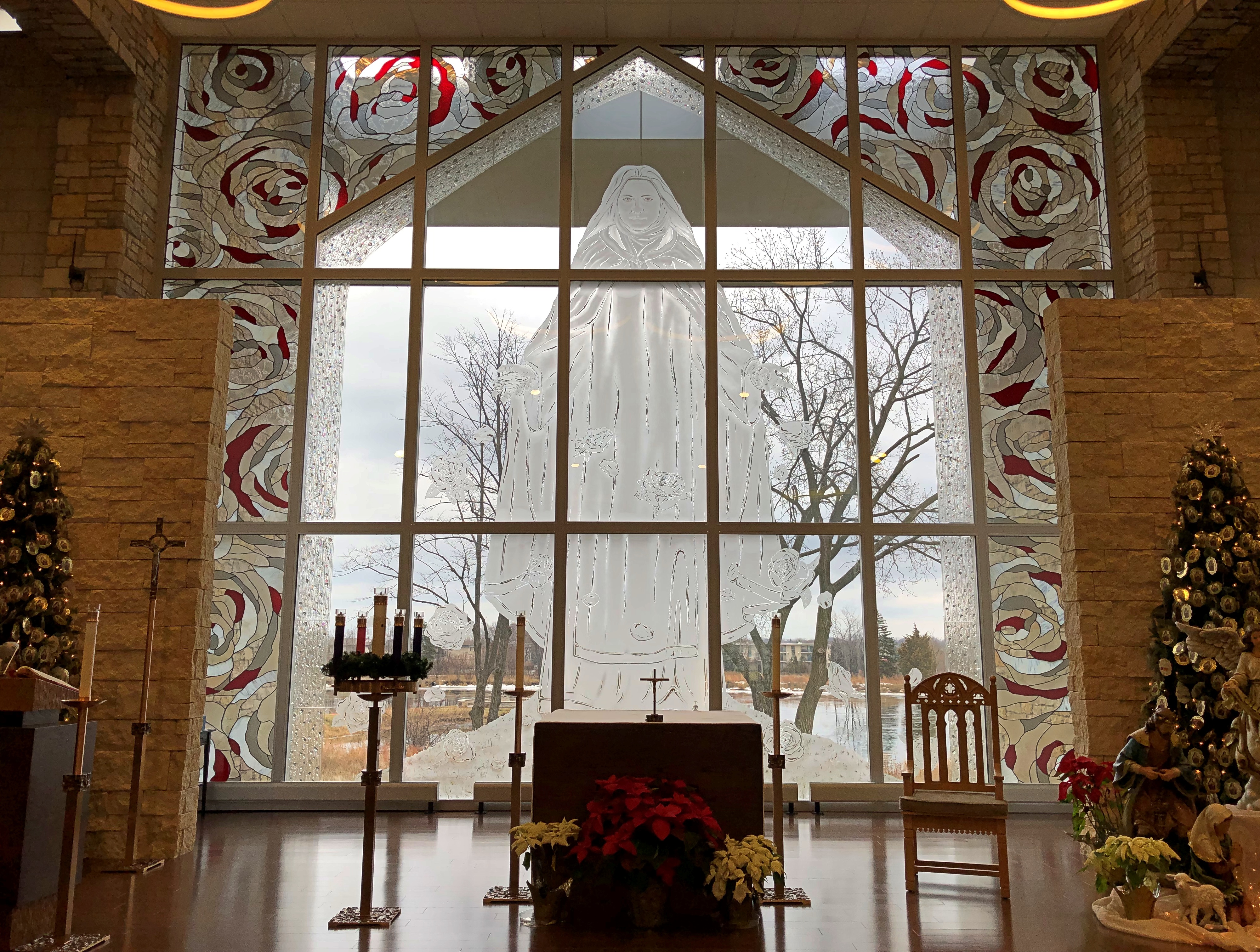
“The architectural solution pays homage to St. Therese throughout, from the main building’s shape, inspired by the unfolding petals of a flower, a nod to St. Therese’s nickname ‘Little Flower,’ to key structures, such as the plaza clock tower, reminding us of her clockmaker father, and the 24-column colonnade, serving as a symbol of St. Therese’s 24 years of life,” CVG notes.
“As St. Therese had humble beginnings, special attention was taken to provide simple building materials using stone, brick and the limited use of wood for construction materials. The entire building layout focuses on the center altar and image of St. Therese etched in the chancel glass wall, through which there are views of her statue built out into the lake behind the chapel.”
In December, St. Thérèse is the star of Christmas trees in the shrine.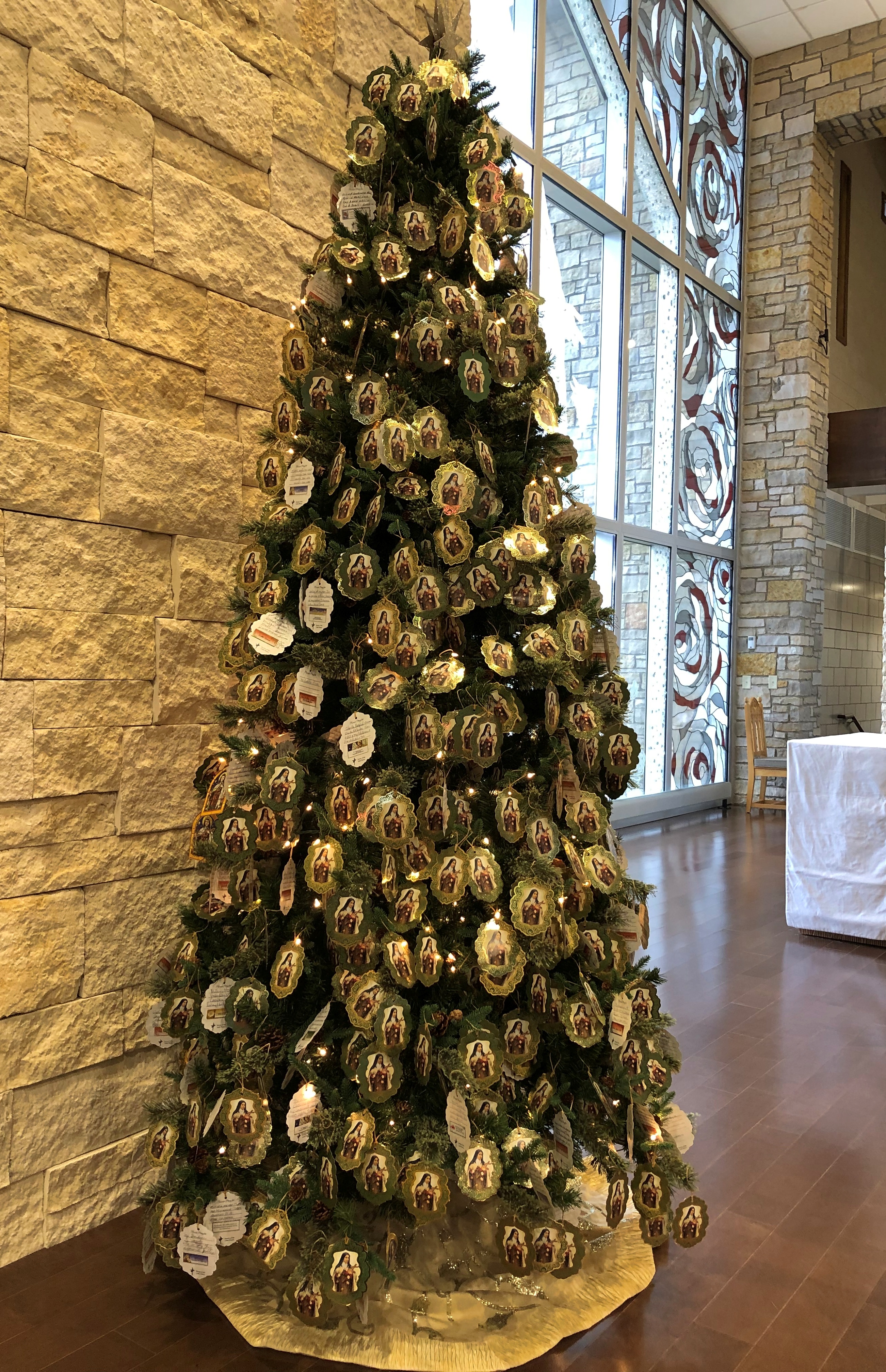
I don’t think I’ve ever seen a tree decorated with prayers before, but there it was. All of them to the saint.
The museum included some seasonal features as well, such as a nativity under a more permanent woodwork depicting the saint.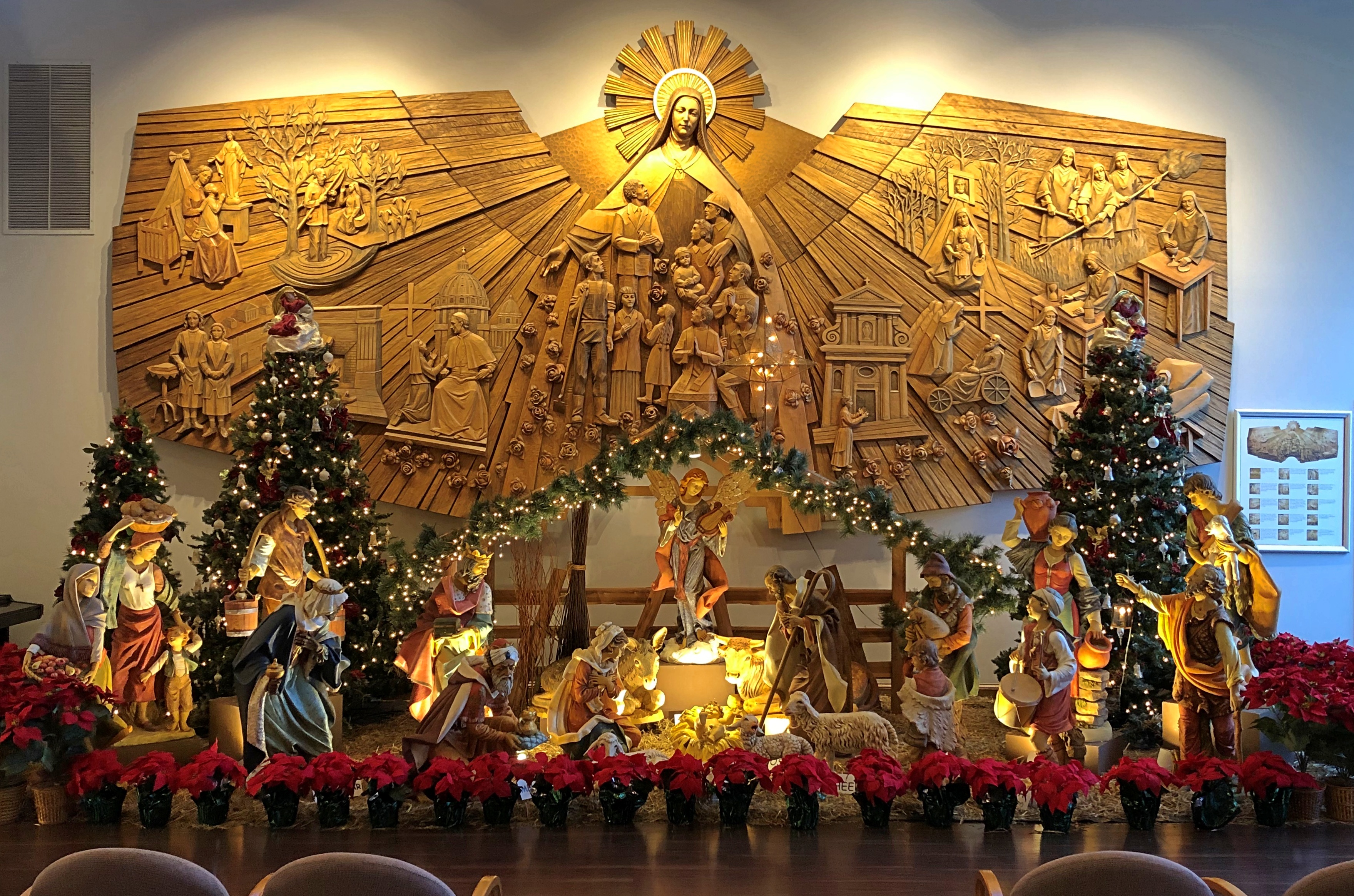
Just in case anyone is uncertain, labels come with the nativity scene. Guess that’s helpful for kids who have just learned to read, but I as far as can remember as a kid, the figures were something that everyone knew. Essential Christmas lore, even for public school children. Maybe that’s not true anymore.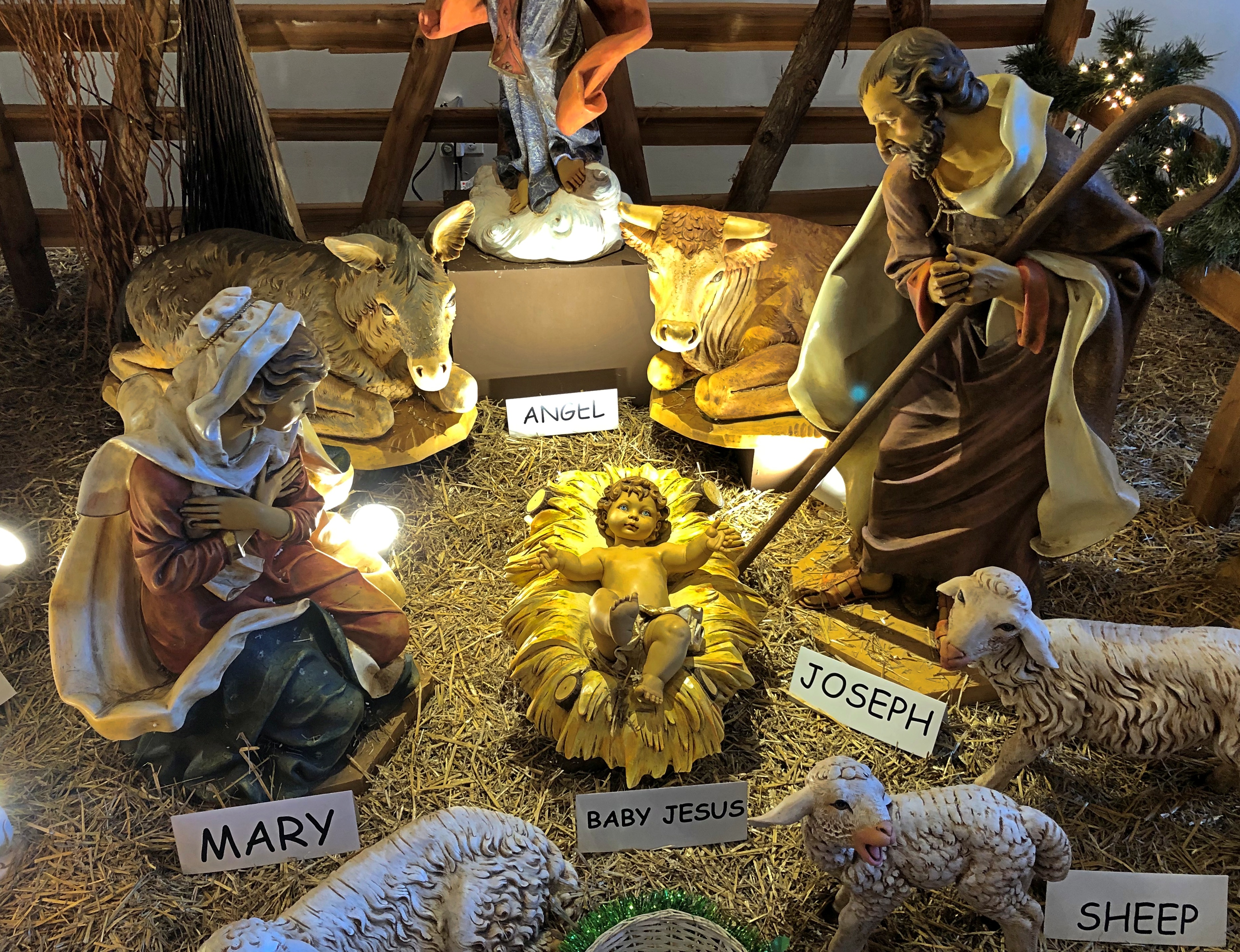
Modern stained glass. Some nice abstractions plus holy figures.
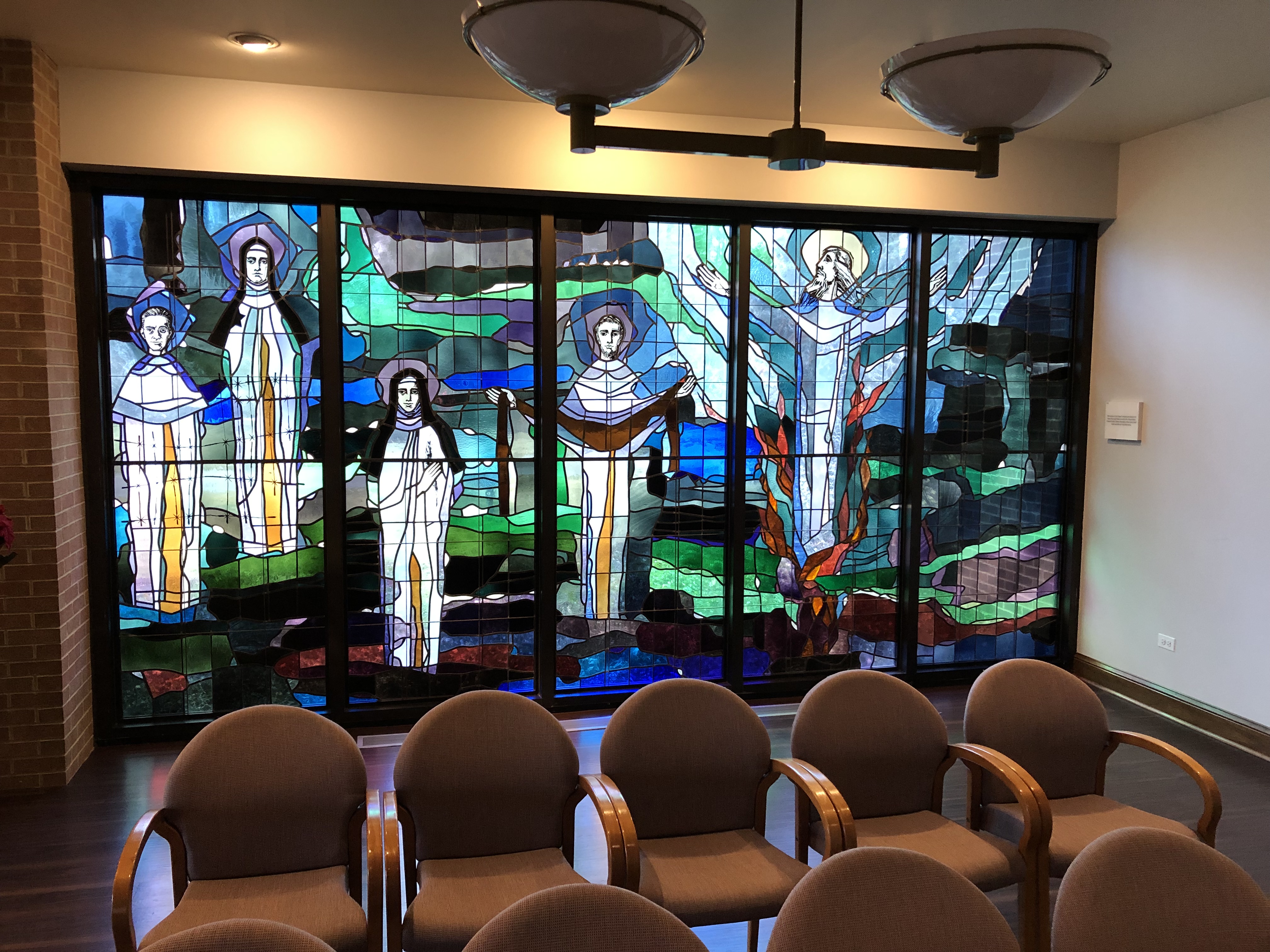
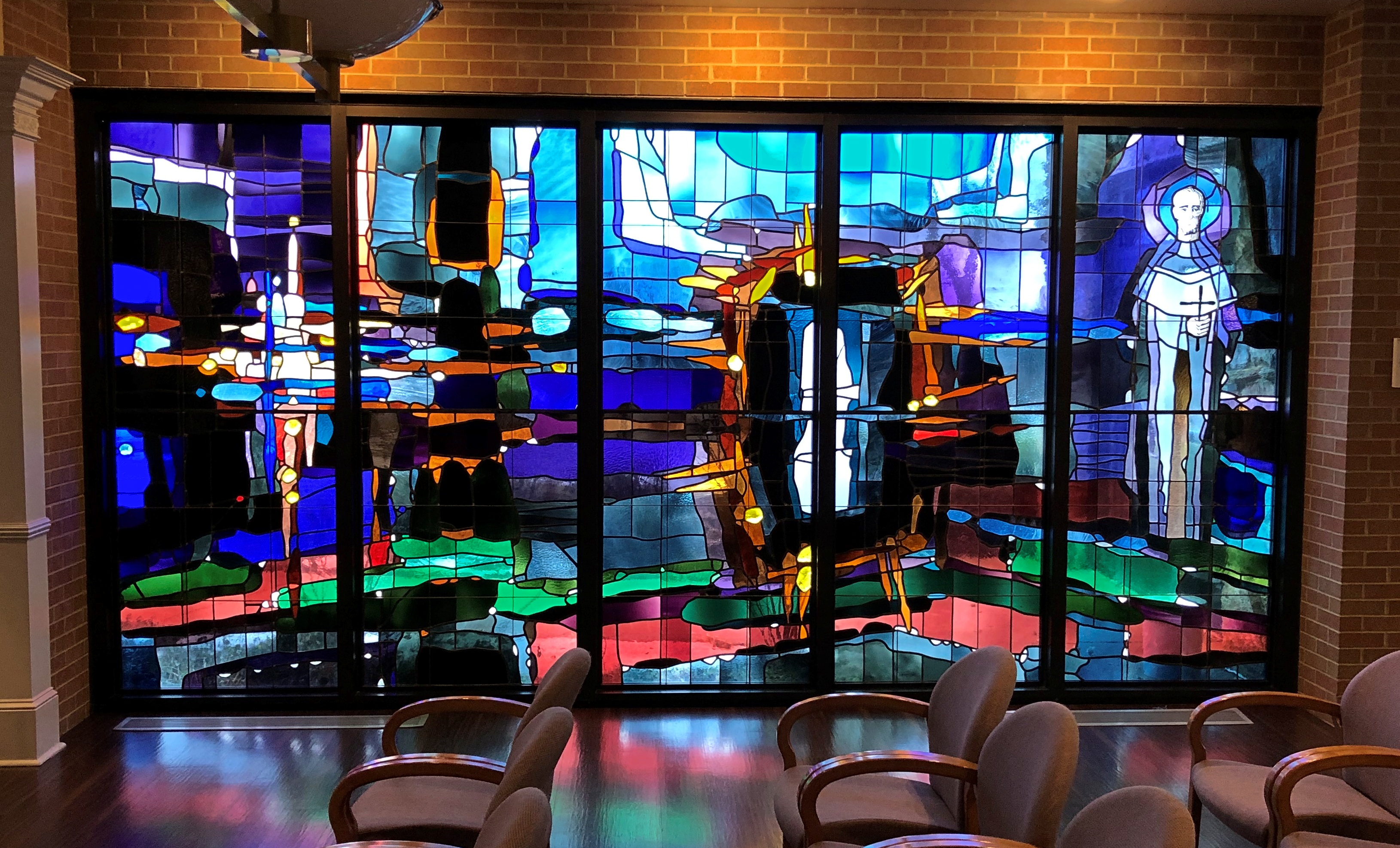
What would a saint’s shrine complex be without some relics?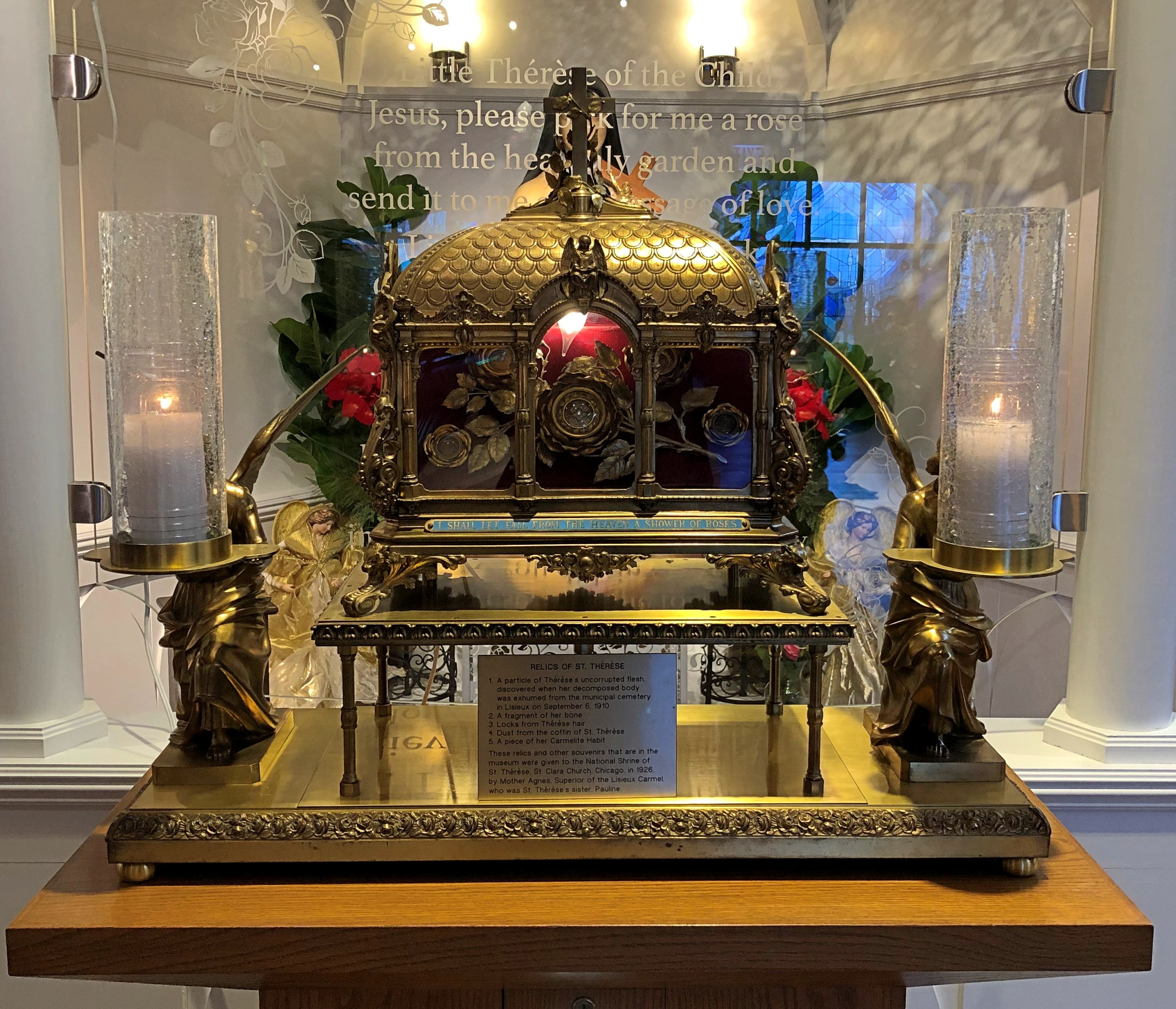
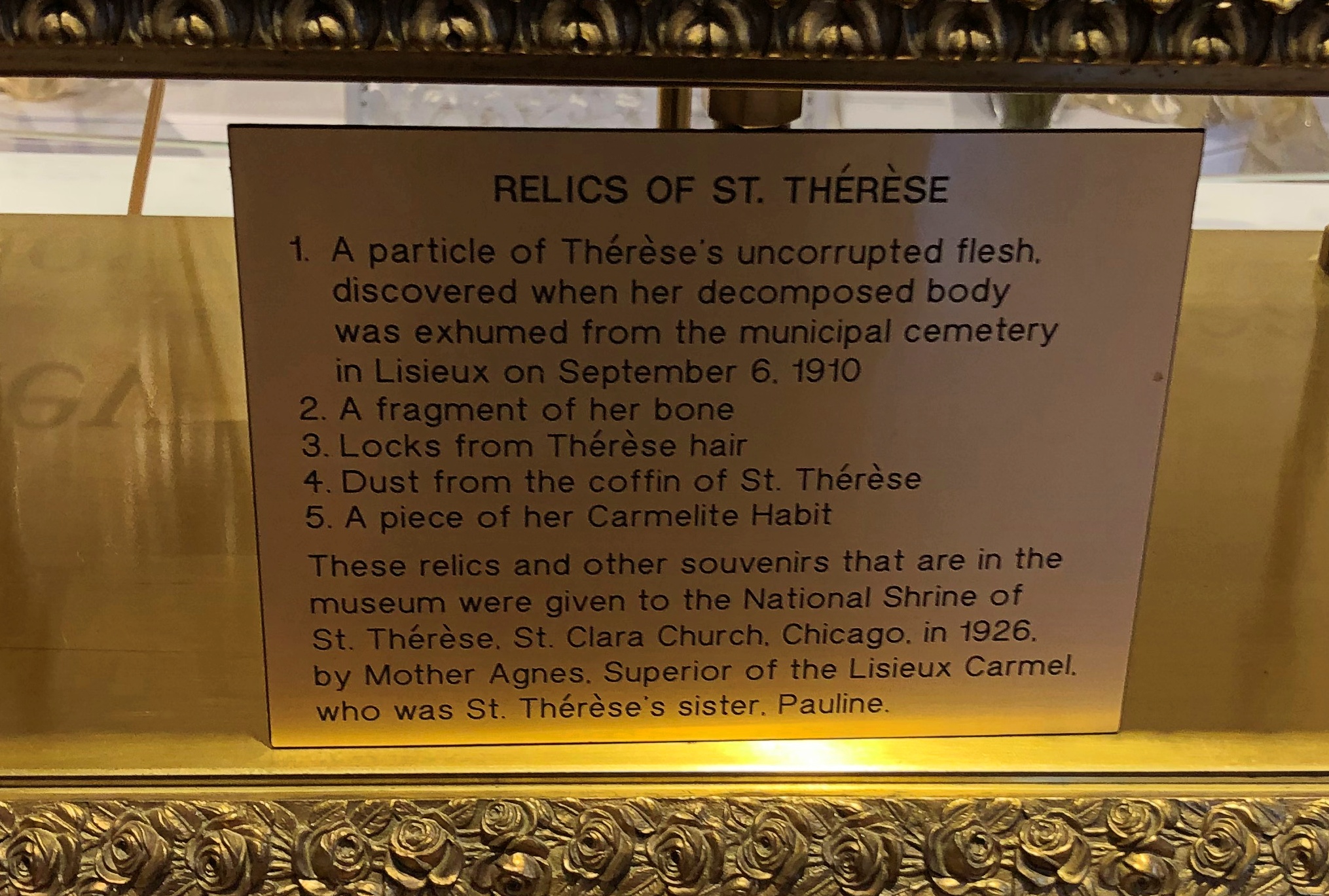
I didn’t know dust could count as a relic, but I’m not up on what can and can not constitute a relic. The museum also has a few relics of Thérèse’s parents, Louis and Zélie Martin, who happen to be saints as well.
“Louis had tried to become a monk, but was rejected because he could not master Latin,” a sign in the museum says. “Zélie Guérin tried to become a Sister of Charity, but was rejected due to poor health.”
They couldn’t take vows, but apparently did the next best thing: produce five daughters (the survivors of nine children), all of whom became nuns.
